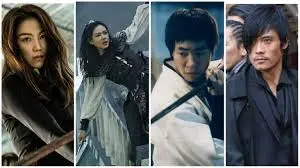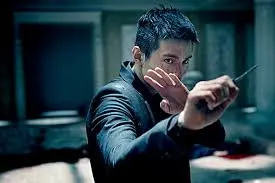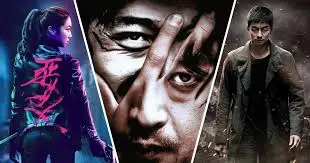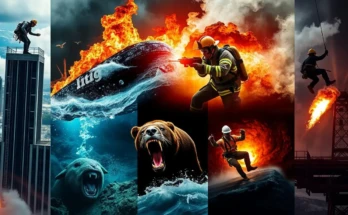Alright, moviegoers, fasten your seatbelt! We’re going to plunge right into the heart-pounding, breathtakingly beautiful realm of Korean action movie action scenes. Take a moment to forget your usual Hollywood explosions. Action has been elevated to a new level by Korean directors, who have infused it with a distinct fusion of roughness, artistry, and unfiltered emotion. Are you prepared to see how they have reimagined the on-screen brawl?

Think back to the early days of Korean cinema. Action sequences, while present, often mirrored their international counterparts, perhaps lacking the distinct flavor we see today. But like a seed patiently growing, Korean action cinema began to cultivate its own identity, drawing inspiration from its rich cultural heritage and a willingness to push boundaries.
The Early Sparks: Laying the Groundwork for Thrills
Early Korean action films often featured straightforward narratives with action serving primarily to advance the plot. While not as stylized as later works, these films laid the essential groundwork, introducing audiences to on-screen conflict and building a foundation for future innovation. Think of it as learning the basic chords before composing a symphony.
The Influence of Martial Arts Cinema: A Punch Above the Rest

The global wave of martial arts cinema, particularly from Hong Kong, had a significant impact on Korean action filmmaking. The emphasis on intricate choreography, acrobatic stunts, and hand-to-hand combat resonated deeply and began to be integrated into Korean productions, adding a layer of visceral excitement.
Finding Its Own Voice: The Rise of Distinct Korean Action Styles
As Korean cinema matured, so did its action sequences. Filmmakers started to experiment, blending genres and incorporating unique stylistic elements that set their work apart. This period saw the emergence of a more gritty, realistic, and emotionally charged approach to action.
The Gritty Realism of the New Korean Cinema Wave
The late 1990s and early 2000s saw the rise of the “New Korean Cinema” movement, characterized by a willingness to tackle darker themes and portray violence in a more unflinching and realistic manner. Action sequences during this period often felt raw and visceral, emphasizing the consequences of violence. Think of the brutal fight choreography in films like “Oldboy” – it’s not just about looking cool; it feels impactful.
Blending Genres: Action as a Spice, Not Just the Main Course
Korean filmmakers became adept at seamlessly blending action with other genres like drama, thriller, and even comedy. This resulted in action sequences that were not just standalone set pieces but were deeply integrated into the narrative, serving to heighten emotional stakes and reveal character.
The Art of Choreography: More Than Just Fancy Moves
Korean action choreography evolved beyond simple punches and kicks. It became a form of visual storytelling, with each movement conveying character motivations, the intensity of the conflict, and the emotional weight of the scene. Think of the fluid and often brutal choreography in films like “The Man from Nowhere” – it’s practically a dance of destruction.

Key Elements Defining Modern Korean Action Cinema
What are the ingredients that make Korean action sequences so captivating and unique today? Let’s break down some of the key elements.
Long Takes and Minimalist Editing: Immersing the Viewer in the Chaos
Many Korean action films utilize long takes and minimal editing, particularly during fight sequences. This technique creates a sense of immediacy and realism, pulling the viewer directly into the heart of the action and showcasing the performers’ skill. It’s like being right there in the middle of the brawl, feeling every punch and kick.
south-korean-women-directors-receive-recognition-special-screening-series
The Use of Environment: Turning Ordinary Spaces into Battlegrounds
Korean action often cleverly utilizes the environment, turning everyday locations like narrow hallways, crowded markets, and rain-soaked streets into dynamic and unpredictable battlegrounds. This adds a layer of realism and ingenuity to the action.
Emotional Stakes: Making Every Fight Matter
Unlike some action films where the fighting feels purely spectacle-driven, Korean action often grounds the violence in strong emotional stakes. The characters are fighting for something they deeply care about – revenge, survival, justice – making the action sequences more impactful and emotionally resonant.
The “Show, Don’t Tell” Philosophy: Action as Character Development
In many Korean action films, the way a character fights reveals a lot about their personality, their past, and their motivations. Are they brutal and efficient? Desperate and clumsy? The action itself becomes a form of character development.
Pushing Boundaries: Innovation and Experimentation
Korean filmmakers are not afraid to experiment with new techniques and push the boundaries of what action cinema can be. This constant innovation keeps the genre fresh and exciting.
How Martial Arts Choreography Shapes Action Films and Stuns Audiences
Iconic Films and Directors: Trailblazers of Korean Action
No discussion of Korean action cinema would be complete without mentioning some of the iconic films and directors who have shaped its evolution.

Park Chan-wook: The Master of Stylish Vengeance
Films like “Oldboy” and “Sympathy for Mr. Vengeance” are prime examples of Park Chan-wook’s stylish and brutal approach to action, often intertwined with themes of revenge and psychological turmoil.
Bong Joon-ho: Action with Social Commentary
While not strictly action films, Bong Joon-ho’s works like “Snowpiercer” and “Okja” feature impactful action sequences that are often infused with social commentary and a unique visual flair.
Kim Jee-woon: The Stylist of Genre-Bending Action
Kim Jee-woon’s films, such as “A Bittersweet Life” and “The Good, the Bad, the Weird,” showcase his mastery of visual style and his ability to blend intense action with elements of noir and western genres.
Ryoo Seung-wan: The King of Urban Action
Ryoo Seung-wan is known for his gritty and realistic portrayal of urban action in films like “City of Violence” and “Veteran,” often featuring intricate fight choreography in confined spaces.
Na Hong-jin: The Relentless Pursuit of Thrills
Na Hong-jin’s films, including “The Chaser” and “The Yellow Sea,” are characterized by their relentless pacing and brutal, often chaotic action sequences that reflect the desperation of the characters.
The Global Impact: Korean Action’s Influence on World Cinema
Korean action cinema is no longer a hidden gem; it has gained significant international recognition and influence, inspiring filmmakers and captivating audiences worldwide.
Hollywood Takes Notice: Remakes and Inspirations
The impact of Korean action is evident in Hollywood remakes of films like “Oldboy” and the clear influence on the action choreography and storytelling in various Western productions.
A New Standard for Action Storytelling
Korean cinema has raised the bar for action storytelling, demonstrating that action can be visceral and exciting while also being emotionally resonant and narratively significant.
Cultivating a Global Fanbase for Korean Action
The unique style and high quality of Korean action films have cultivated a dedicated global fanbase eager for the next thrilling installment.
The Future of Korean Action: What’s Next in the Ring?
What does the future hold for action sequences in Korean cinema? We can likely expect continued innovation, further blending of genres, and the exploration of new technologies to create even more immersive and breathtaking action experiences.
Embracing New Technologies: VR and Beyond
Virtual reality and other emerging technologies could offer new and exciting ways to experience action sequences in Korean films, blurring the lines between viewer and participant.
How to Maintain and Clean Your Solar Panels for Maximum Output
Continued Genre Blending and Experimentation
Korean filmmakers will likely continue to push the boundaries of genre, creating unique and unpredictable action hybrids.
Focusing on Character-Driven Action with Deeper Meaning
The trend of grounding action in strong character development and emotional stakes is likely to continue, making the fights even more meaningful and impactful.
Conclusion: The Unstoppable Force of Korean Action
The evolution of action sequences in Korean cinema is a testament to the creativity, innovation, and storytelling prowess of its filmmakers. From its early influences to its current global acclaim, Korean action has carved out a unique and powerful identity, delivering thrills that are not just visually stunning but also emotionally resonant and narratively rich. So, the next time you’re looking for an action film that will truly leave you breathless, don’t forget to explore the incredible world of Korean cinema – you won’t be disappointed!
Unique FAQs:
1. What makes the fight choreography in Korean action films stand out compared to other countries?
Korean fight choreography often emphasizes a blend of realism and artistry. While some films feature highly stylized martial arts, many prioritize a more grounded and brutal approach, focusing on the impact of each blow and the desperation of the characters. There’s often a rawness and physicality that feels distinct.
2. How has the portrayal of violence in Korean action cinema changed over time?
Early Korean action films often depicted violence more subtly. However, with the rise of the New Korean Cinema movement, there was a shift towards a more unflinching and realistic portrayal of violence, often exploring its consequences and psychological impact on characters. This grittier approach has become a hallmark of many contemporary Korean action films.
3. Are there specific cultural elements that influence the style of action in Korean cinema?
Yes, elements of Korean culture can subtly influence the action. For example, the emphasis on honor, loyalty, and revenge in Korean storytelling often translates into the motivations behind the action sequences. Additionally, traditional Korean martial arts and aesthetics can sometimes be incorporated into the visual style and choreography.
4. How do Korean action films often integrate humor into intense action sequences?
Some Korean action films masterfully blend intense action with moments of dark humor or comedic relief. This can serve to heighten the tension by providing unexpected shifts in tone or to make the characters more relatable in the face of extreme situations. It’s a delicate balance that Korean filmmakers often execute effectively.
5. What are some common tropes or recurring themes you might find in Korean action films?
Revenge is a prevalent theme in many Korean action films, often serving as the primary motivation for the characters’ actions.8 Themes of corruption, social injustice, and the struggle for survival are also common.9 In terms of tropes, lone protagonists fighting against overwhelming odds and unexpected twists and turns in the narrative are frequently seen.


